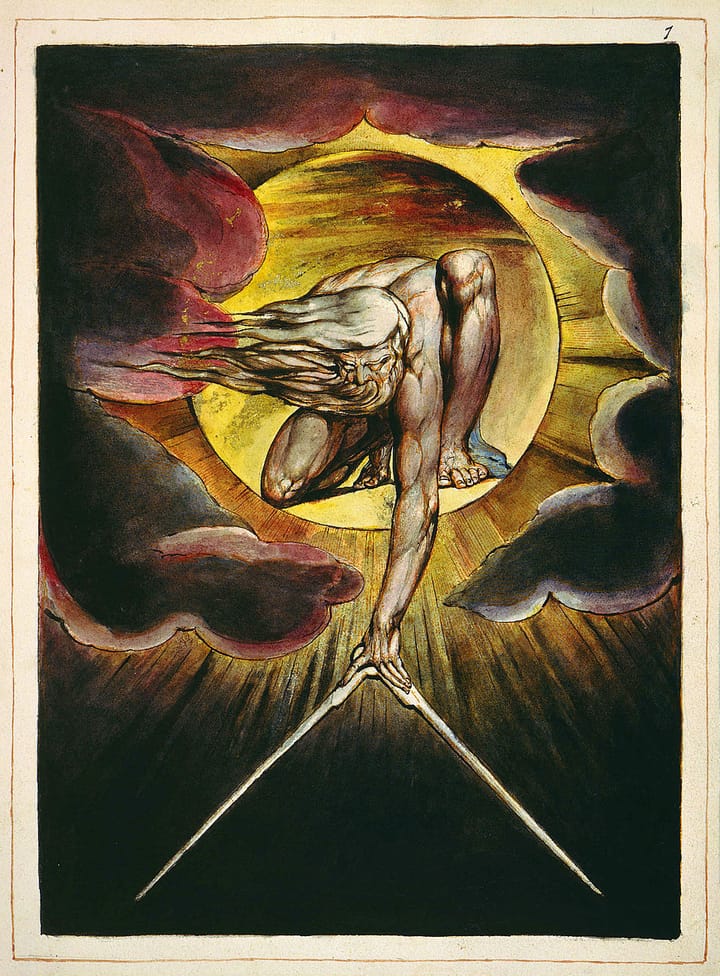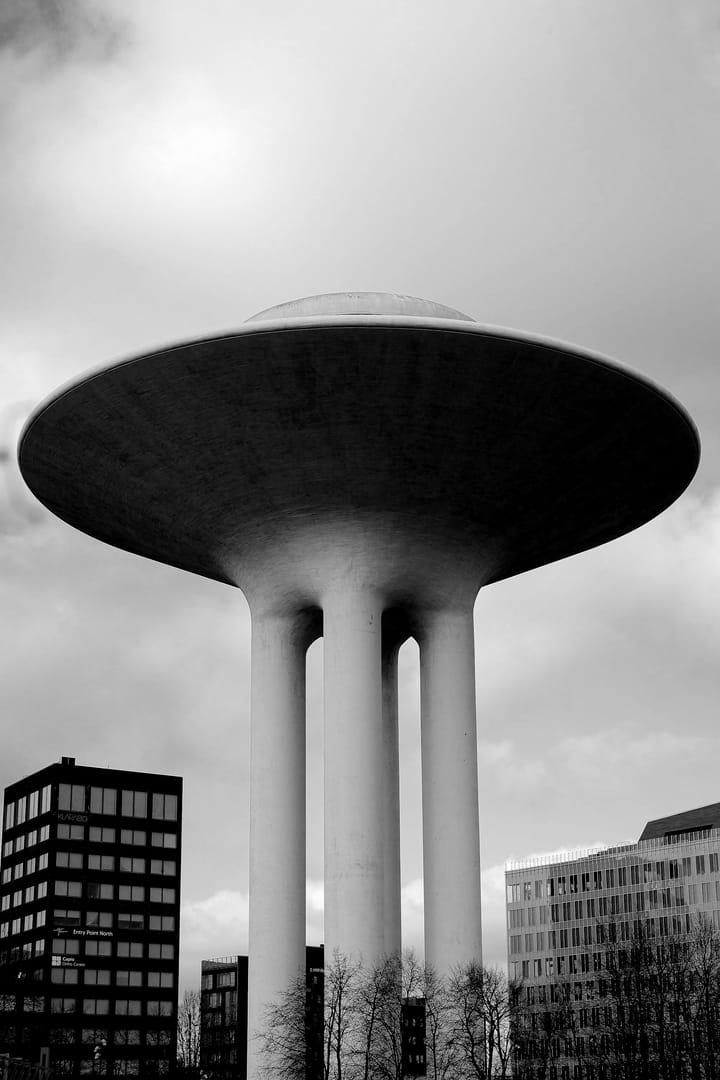week 20 / 2025
Firing up the neutron beam, slicing through the materiality of the text—WEEKNOTES straddles the disciplinary spectrum like Slim Pickens straddled the bomb! This week, facilities are toured, art is produced, projects are revealed... and houses are haunted?

It feels like I’ve truly spanned the disciplinary spectrum this week. At the one end, the opportunity arose to take a tour of the European Spallation Source, one of the relatively new Big Physics facilities attached to Lund University; this was about as strong a dose of the technoscientific sublime as one could ask for, and a real privilege. (This week's header image is one of the many photos I took on the tour.)
At the other end, this has also been a week in which almost all my hours of work have been devoted entirely to the making of pure art, in the form of a series of collages that I’m exhibiting next week. I had originally planned to do these steadily over the last two or three months, but a welcome glut of client work obliged me to crunch much of the material process into this week… and I’m kind of glad it did? Because firstly, while it’s nice to have a daily creative practice, it can be hard to make space for another one in days that are already crammed with activity; and secondly, it’s a genuine pleasure to be able to take big half-day chunks of time and just sink into a creative flow-state that’s very different to the one I get from writing.
(Is the art any good? Well, I’m pretty pleased with what I’ve done—though I’ll not be giving up the day-job for a while yet!)
Somewhere in the middle, last weekend saw me tying up the loose ends on PROJECT LOFTY, my first solo prototyping commission. As it was given its first showing at a conference in the UK on Friday, I can now reveal LOFTY as The Wirecutter Leaks, the documentation and assets for which can be found on my canonical website.
I plan to write about my thinking and process for that project in a forthcoming essay here at Worldbuilding Agency, but it can be enjoyed (if that’s the right word) without any unpacking; indeed, the process of your unpacking it for yourself is kind of the whole point. Do feel free to take a look, and let me know what you think—be sure to start by listening to the “leaked” voice memo!
OK then, let’s catalogue the week’s doings...
ticked off
- Twenty-six hours on my collages for next week’s exhibition. (See above. I’ll be heading back uptown after these weeknotes are done to put in another four or five hours, too.)
- Four hours of admyn (in which I am including the hour it took to paste up the second part of my interview with Cameron Tonkinwise.)
- Three hours finalising PROJECT LOFTY. (See also above.)
- Three hours on PROJECT PONTIF. (Bit of a slow week on PONTIF, but managed to keep the clubs aloft, so to speak.)
- Two hours doing the edits on my next column for Vector. (Both my editor and I are pretty happy with how this one has come out.)
- One lonely hour on PROJECT PORTON. (PORTON will be back next week, if not exactly with a vengeance. Many thanks are due to the client for PORTON, and their willingness to let me have a lull week for my art stuff.)
Plus ten hours of undirected writing and reading, natch.
kinmaking
This has been quite a social week, actually, with a stimulating one-to-one chat with John “Smithery” Willshire being a definite highlight. This conversation even came with a synchronous conceptual gift—one of those moments when someone drops a concept or idea which is exactly what you’d been looking for in a seemingly unrelated space. Thanks, John!
(John’s currently looking at an interesting new political avenue for regenerative design in the south of the UK; if you have connections to the county of Sussex, you might want to take a look.)
I already mentioned my tour of the ESS, which came bundled as part of a morning in the company of people connected to the (very prospective, but nonetheless fascinating) PROJECT BLINDSIGHT.
Friday morning, meanwhile, saw me in Lund for Karl Holmberg’s PhD thesis defence, which put me in the orbit with lots of former colleagues from my postdoc years—though we did most of the chatting at the party that evening, of course!
reading
I’ve been wondering how I managed to miss Mark Z Danielewski’s House of Leaves the first time round, and my conclusion is that I probably dismissed it on the basis of its generally being categorised as a horror novel. That’s not exactly a false categorisation, but it’s also sorely inadequate: the core story at the heart of the book is the almost cosmic horror concept of the titular house, which seemingly contains an infinite (or at least absurdly extensive) and constantly mutating labyrinth of blank and murderous architectural space, but that story is contained within two or three narrative frames—perhaps even four, depending on how you decide to count them—some of which openly proclaim the fictionality of the house itself, the events supposed to have transpired there, and the various documents and documentaries of said events that one of the narratives purports to describe, critique and analyse. It has enough footnotes—nested, inverted, embedded, reversed, looping—to make David Foster Wallace look like a straightforward storyteller, plus certain words printed in colour and/or under erasure, concrete-poetic layout tricks, font shifts, and enough annexes and appendices to take up around a fifth of the book.
It is, in other words, a very experimental novel—and perhaps even the last hurrah of a particular sort of postmodern experimental writing? Published not long after the turn of the millennium, it is both an artefact of a time when the thing that we (increasingly inaccurately) call “the internet” was little more than an idea for the average person on the street, and in some ways an uncanny prophecy regarding the untrustworthiness of electronically mediated images and narratives, a problem which feels to be reaching its full flowering in the present moment.
(It would be very much in the spirit of House of Leaves to proclaim that the titular house is actually a sort of proleptic metaphor for “the internet”; if I had the time, I would quite enjoy writing an essay to that effect.)
House of Leaves is probably not for the reader who’s just looking for a straightforward story. The reader who is fascinated with story as such, however, will find it both delightful and maddening, not to mention ambitious, absurd and absolutely compelling. It is also perhaps the most stoned novel I have read since the Nineties, to the extent that reading delivers something like a contact high; some of the characters are imbibers of various recreational substances, but the stonedness really inheres in the affect of the concept and its execution. That said, I suspect that trying to read it while decently baked would be almost impossible, unless you found some way to surf the vibe without digging the details.
As is probably obvious, I’m enjoying it hugely.
a clipping
I have read even less Stuff From The Internet this week than last week, so I am digging in the crates a little bit and recommending this long piece by James Bridle at Future Observatory:
... while Lovelock and Margulis’s theory was hotly debated, and often derided, others took up and mobilised the figure of Gaia into something – or someone – even more active. The philosopher of science Bruno Latour, in his 2013 Gifford lectures delivered at Edinburgh University, figured Gaia as a ‘secular deity’, a ‘name proposed for all the intermingled and unpredictable consequences of the agents, each of which is pursuing its own interest’. Gaia is not ‘old nature’, nor does she ‘play either the role of inert object that could be appropriated or the role of higher arbiter’; rather, Gaia is a manifestation of the Earth itself overcoming the old separation between nature and culture that has guided humanity for millennia, and ‘an injunction to rematerialize our belonging to the world’. Such a materialisation is undoubtedly a concern for design.
I have some quibbles with parts of Bridle’s argument, here—for example, I think that taking a metaphor of some fifty years vintage to task for the sin of “human exceptionalism” is discursively unhelpful or counterproductive, even if it might be technically true—but the core point they are making is crucial and timely, and (as always) elegantly expressed. Spend some time with it, why don’t you?
Right, that’s your lot, and I have old books to cut up and glue together—see you on the other side.
This has been the Worldbuilding Agency weeknotes for Week 20 of 2025. Thanks for reading! If you've enjoyed them, it's free to subscribe. If you are already subscribed, please send to a friend who you think might also like it!





Comments ()